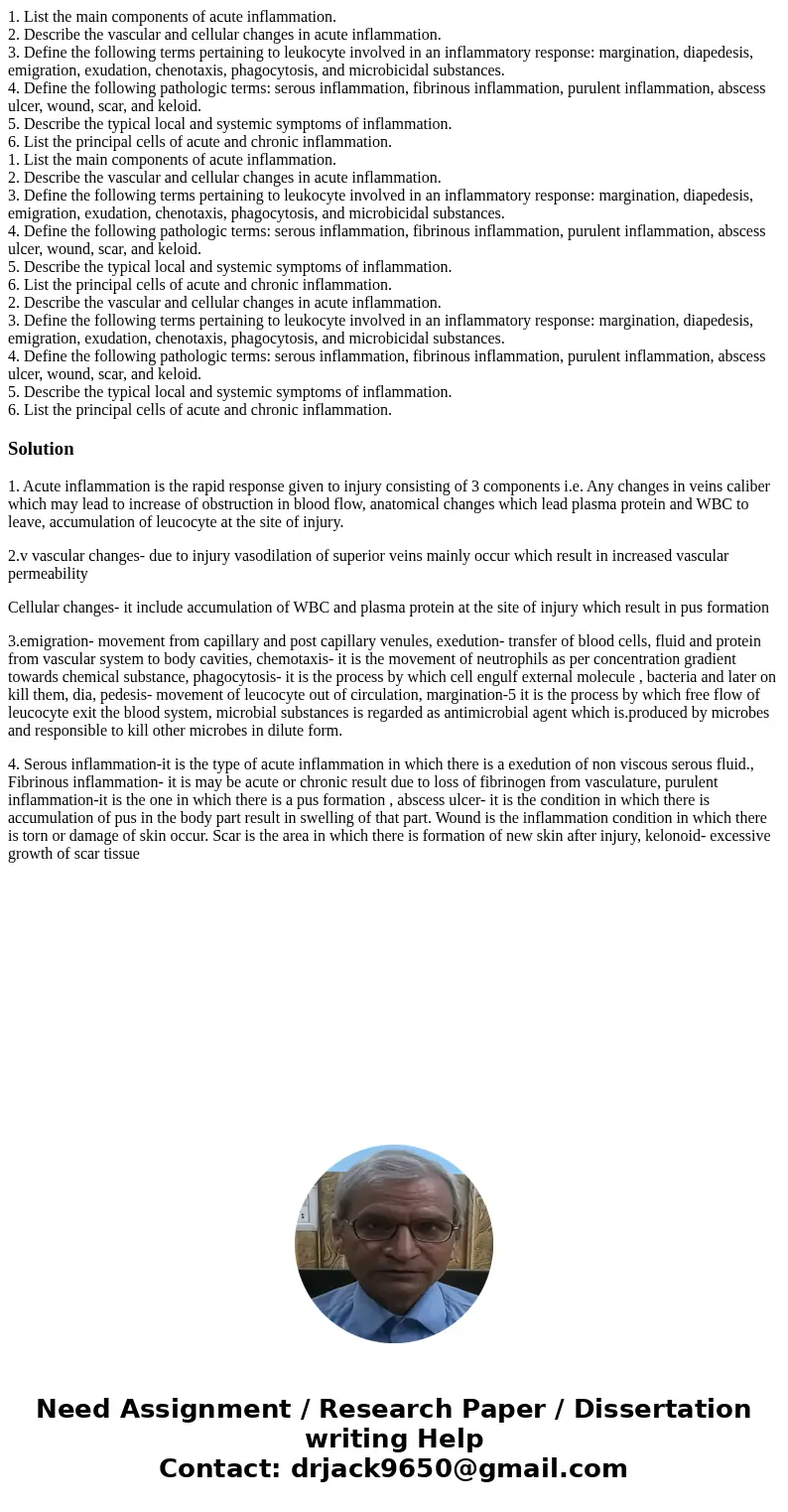1 List the main components of acute inflammation 2 Describe
Solution
1. Acute inflammation is the rapid response given to injury consisting of 3 components i.e. Any changes in veins caliber which may lead to increase of obstruction in blood flow, anatomical changes which lead plasma protein and WBC to leave, accumulation of leucocyte at the site of injury.
2.v vascular changes- due to injury vasodilation of superior veins mainly occur which result in increased vascular permeability
Cellular changes- it include accumulation of WBC and plasma protein at the site of injury which result in pus formation
3.emigration- movement from capillary and post capillary venules, exedution- transfer of blood cells, fluid and protein from vascular system to body cavities, chemotaxis- it is the movement of neutrophils as per concentration gradient towards chemical substance, phagocytosis- it is the process by which cell engulf external molecule , bacteria and later on kill them, dia, pedesis- movement of leucocyte out of circulation, margination-5 it is the process by which free flow of leucocyte exit the blood system, microbial substances is regarded as antimicrobial agent which is.produced by microbes and responsible to kill other microbes in dilute form.
4. Serous inflammation-it is the type of acute inflammation in which there is a exedution of non viscous serous fluid., Fibrinous inflammation- it is may be acute or chronic result due to loss of fibrinogen from vasculature, purulent inflammation-it is the one in which there is a pus formation , abscess ulcer- it is the condition in which there is accumulation of pus in the body part result in swelling of that part. Wound is the inflammation condition in which there is torn or damage of skin occur. Scar is the area in which there is formation of new skin after injury, kelonoid- excessive growth of scar tissue

 Homework Sourse
Homework Sourse